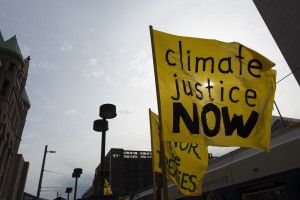Chris Smith
Reporter
On September 6, 2010, a gas station had just exploded and a fire with flames reaching 300 feet was raging through the neighborhood. The actual problem was a ruptured pipeline spewing natural gas caused a blast that resulted i n a 72 foot long crater, killed eight people, and injured more than fifty. A 2012 study of America’s 2.5 million miles of oil and natural gas pipelines, reported that more than half of the countries pipelines are over 50 years old. The lack of federal oversight by the Pipeline and Hazardous Materials Safety Administration increase the chance for an oil or natural gas spill. This is what many environmentalists and the Standing Rock Sioux tribe in North Dakota fear. The North Dakota access pipeline needs to be stopped.
n a 72 foot long crater, killed eight people, and injured more than fifty. A 2012 study of America’s 2.5 million miles of oil and natural gas pipelines, reported that more than half of the countries pipelines are over 50 years old. The lack of federal oversight by the Pipeline and Hazardous Materials Safety Administration increase the chance for an oil or natural gas spill. This is what many environmentalists and the Standing Rock Sioux tribe in North Dakota fear. The North Dakota access pipeline needs to be stopped.
The North Dakota access pipeline is supposed to travel from North Dakota to Patoka, Illinois, which would also travel underneath the Missouri River, the primary drinking source of the Standing Rock Sioux. The tribe of around 10,000 has a reservation in central part of North and South Dakota. The project was approved to the by the US Army Corps of America. It is being built by Energy Transfer Partners.
The pipeline would lead to thousands of jobs, and it would also shuttle 470,000 barrels of crude oil a day, Energy Transfer Partners stated. The oil would make up to 374.3 gallons of gas per day, which would decrease our reliance on foreign oil. Are the Potential dangers to the climate and to the native people really worth all of this?
The Pipeline and Hazardous Materials Safety Administration (PHMSA) has reported more than 3,300 incidents of leaks and ruptures at oil and gas pipelines since 2010. Even the tiniest spill could damage the Sioux’s water supply. Water is the most essential nutrient for life and we should do everything we can to prevent any water source from being polluted.
 The Sioux argue that the pipeline will “destroy our burial sites, prayer sites and culturally significant artifacts,…” Many environmentalists and 274,000 online petitioners agree that there are environmental concerns, including possible contamination, which could potentially lead to greenhouse gas emissions. This would fuel climate change and caused more damage to our atmosphere. And what if the pipeline leaked into the Missouri River? It could lead to catastrophic damage to the water supply.
The Sioux argue that the pipeline will “destroy our burial sites, prayer sites and culturally significant artifacts,…” Many environmentalists and 274,000 online petitioners agree that there are environmental concerns, including possible contamination, which could potentially lead to greenhouse gas emissions. This would fuel climate change and caused more damage to our atmosphere. And what if the pipeline leaked into the Missouri River? It could lead to catastrophic damage to the water supply.
The pipeline is also a cultural threat to the Standing Rock Sioux tribe. The tribes state that the construction of the pipeline would destroy sacred sites where many of their ancestors are buried. The land being used for the pipeline isn’t technically on its reservation, but tribal leaders argue that the government didn’t properly ask the Standing Rock Sioux during the permit process, which is required under federal law.
In July, the Sioux filed a lawsuit against the U.S. Army Corps in the federal courts asking to put a stop to the construction of the pipeline. The law suit is for the following issues:
“First, the pipeline would pass under the Missouri River (at Lake Oahe) just a half a mile upstream of the Tribe’s reservation boundary, where a spill would be culturally and economically catastrophic. Second, the pipeline would pass through areas of great cultural significance, such as sacred sites and burials that federal law seeks to protect.”
The tribe says they remain consistent to stopping the pipeline and has called the UN Human rights council for help stopping it.
The Obama administration later asked Energy Transfer Partners to “voluntarily” stop construction on all surrounding private land. However, They still continued to build on private land. President Obama spoke about the pipeline in an interview with NowThis. He stated, “My view is that there is a way for us to accommodate sacred lands of Native Americans, and I think that right now the army corps is examining whether there are ways to reroute this pipeline,…”
We need to fight for clean water and for the Sioux tribes rights. This is what many people have done. The Standing Rock Sioux tribe has opposed the North Dakota Access pipeline since they first heard about it in 2014. But it’s only been the last several months that have caused it to reach national attention. This has led to thousands of people protesting it as well, including celebrities and public figures like, Shailene Woodley, Mark Ruffalo, civil rights activist Jesse Jackson, and the 2016 green party candidate Jill Stein. It’s a good thing that these people have come out to help because it brings more attention to what is really happening.





Leave a Reply